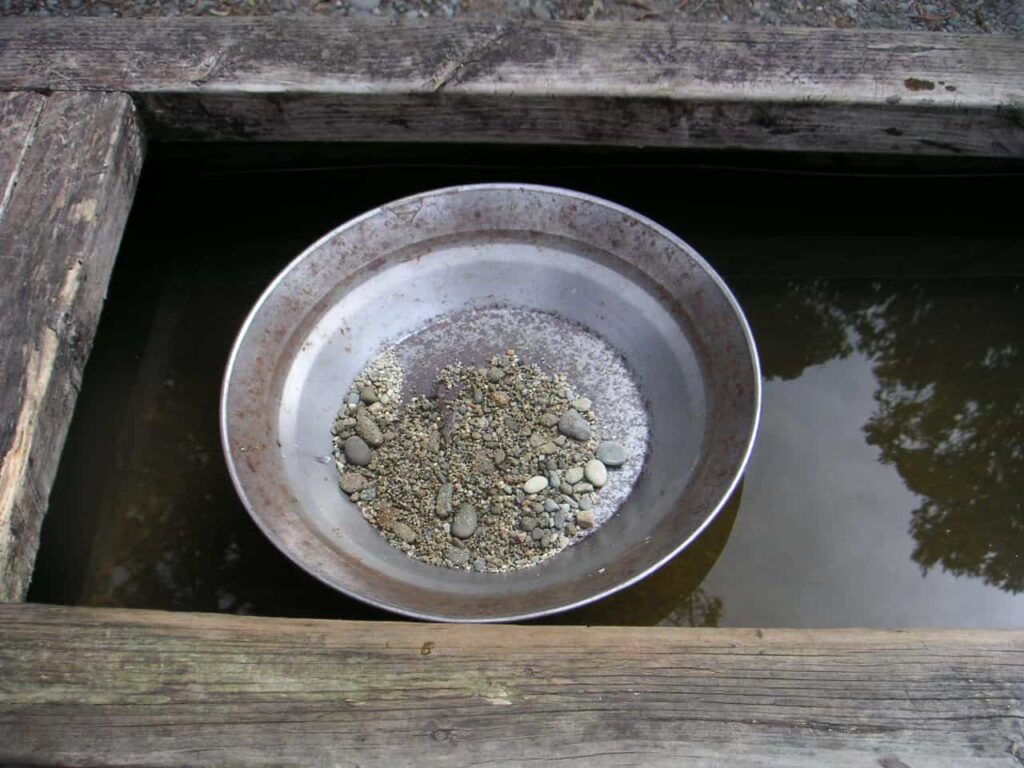
Content approved by Jerry Parker The California gold rush started with the discovery of small pieces of gold in the Sacramento Valley. News began to spread after this discovery, which led thousands of prospectors to flood into the area around San Francisco. Between 1848 and 1849, the non-native population in California swelled from around 1,000 […]
Content approved by Jerry Parker
 The California gold rush started with the discovery of small pieces of gold in the Sacramento Valley. News began to spread after this discovery, which led thousands of prospectors to flood into the area around San Francisco. Between 1848 and 1849, the non-native population in California swelled from around 1,000 to 100,000. About $2 billion worth of gold and other precious metals were mined during the gold rush.
The California gold rush started with the discovery of small pieces of gold in the Sacramento Valley. News began to spread after this discovery, which led thousands of prospectors to flood into the area around San Francisco. Between 1848 and 1849, the non-native population in California swelled from around 1,000 to 100,000. About $2 billion worth of gold and other precious metals were mined during the gold rush.
James Wilson Marshall discovered gold flakes in the American River flowing at the base of the Sierra Nevada Mountains on Jan. 24, 1848. Marshall was working for John Sutter building a water-powered sawmill near Caloma, California. Marshall seemed to know immediately that he had found gold. Shortly after the discovery, the Mexican-American War ended with the signing of the Treaty of Guadalupe Hidalgo. This put California under the control of the United States.
Marshall and Sutter wanted to keep the gold discovery a secret. Word spread quickly, though, and by March, the news of gold discovered at Sutter’s Mill was even being reported in the newspaper. People in San Francisco were skeptical about the news, but a local storekeeper helped set off a frenzy by marching through town holding up a vial of gold that had been extracted from Sutter’s Creek. A couple of months later, about 75 percent of the men in San Francisco had left to try their luck in the gold mines. By August of that year, the miner population was up to 4,000. News continued to spread, and the first migrants began to arrive in California by boat. On the East Coast, people were initially hesitant to believe the claims of gold. But by the end of 1848, President James K. Polk made an announcement about accounts of an “abundance of gold” being corroborated by reports by public service officers in California.
Over the next year, people around America did almost anything they could to scrape up the money to go to California, even to the point of spending their life savings and leaving their families behind. Women were left to run farms and businesses and raise children alone. The prospectors soon became known as ’49ers, because the year was 1849. Mining towns were quickly built because the ’49ers needed places to live. Mining towns and camps were notoriously lawless, and thievery, gambling, violence, and prostitution were common. San Francisco became a thriving metropolis due to its close proximity to the gold mines.
The gold rush was instrumental in California joining the union as the 31st state. When California applied for admission, it had a constitution that barred slavery. This created a conflict in Congress between politicians who favored slavery and those who did not. The Compromise of 1850 stated that California would be allowed to enter the Union as a free state and two new territories, Utah and New Mexico, could decide whether or not to allow slavery.
Surface gold became very difficult to find after 1850, but prospectors continued to arrive in California. Mining had never been safe or easy work, but by 1850, miners were finding much less gold than they had in 1848. Many miners were forced to stop mining independently, instead working as laborers for industrialized mining operations. Hydraulic mining was developed in 1853. It was a profitable method, but it destroyed the California landscape. In 1852, mining was at its peak, with $81 million worth of gold extracted from the earth. Revenue declined slowly in the ensuing years, falling to about $45 million by 1857.
The industrialized mining methods combined with the population boom were responsible for permanent environmental changes in California. Hydraulic mining was profitable, but it was devastating to the landscape. Dams built to supply water to the mining sites changed the way rivers ran, taking water away from farmland. Mining sediment also clogged up other rivers, causing more environmental harm. In addition, the logging industry was started out of a need to build canals and feed boilers at mining sites, and this also took a toll on California’s natural resources.


